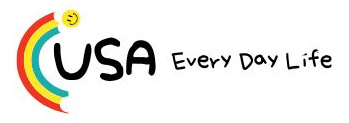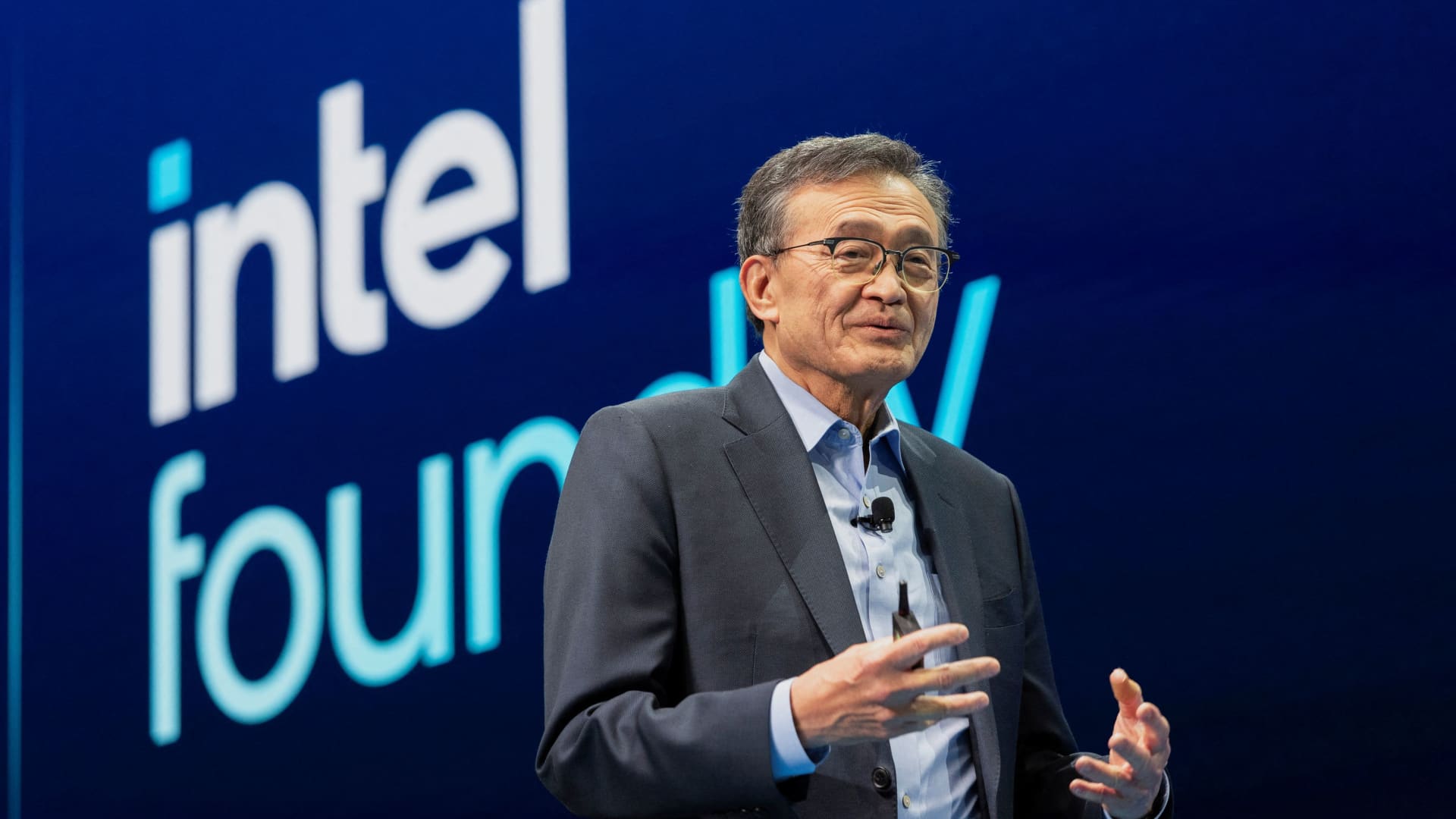Intel’s CEO Lip-Bu Tan speaks at the company’s Annual Manufacturing Technology Conference in San Jose, California, U.S. April 29, 2025.
Laure Andrillon | Reuters
When Lip-Bu Tan was named CEO of Intel a little over two months ago, he brought with him plenty of name recognition. Tan spent 12 years running Cadence Design Systems and before that was a prominent venture capitalist. He’s also held board seats at SoftBank and Hewlett Packard Enterprise.
“Lip-Bu’s Rolodex is like nobody else’s in the semiconductor industry,” Intel CFO David Zinsner said at a financial conference this month. Zinsner said Tan recently met with 22 potential customers and partners in a single day.
At age 65, Tan is going to need more than a vast database of contacts and four decades of operating and investing experience to turn around the company that put the silicon in Silicon Valley but is struggling to stay relevant in a market that’s increasingly centered around artificial intelligence.
Once the world’s largest chipmaker, Intel has lost 70% of its value since early 2020. It’s roughly flat since Tan was named as CEO on March 12.
Tan’s jam-packed schedule in large part reflects a need to change the industry’s perception of Intel. No longer the dominant player in semiconductors, Intel is trying to pivot into chip manufacturing, especially as the U.S. focuses on investing in onshoring critical technologies. Tan has been listening to customers to find out specific technical requirements they would need from Intel as a foundry, he’s said in public remarks.
Under Tan’s predecessor, Pat Gelsinger, Intel spent $90 billion between 2021 and 2024 on building the company’s foundry operations and unlocking additional U.S. government funding. Capital expenditures in 2025 are expected to reach $18 billion.
Investors, and eventually the board, lost trust in Gelsinger’s ability to generate much of a return on that investment, leading to his ouster late last year. In an industry where roadmaps and capital plans are measured in five-year increments, Tan is under pressure to start building confidence immediately.

“The foundry business, it operates at a different time scale,” said Alvin Nguyen, an analyst at Forrester. “It operates with a level of investment that is tough to stomach, and very few publicly traded companies can deal with it.”
Intel faces a plethora of other challenges that all predate Tan’s tenure. The company’s central processors, or CPUs, that for decades were the most expensive and important part in computers, have been supplanted by AI chips, primarily graphics processing units, or GPUs, from Nvidia. Meanwhile, Advanced Micro Devices has picked up substantial market share in CPUs and server chips, and Qualcomm has emerged as a big challenger as well.
Tan is working on an AI strategy under Sachin Katti, who was named chief technology officer in April after joining the company in 2021.
Tan was born in Malaysia and raised in Singapore. He moved to the U.S. in the 1970s and studied nuclear engineering at the Massachusetts Institute of Technology. He’s since touched just about every aspect of the chip industry.
Before joining Intel, he was CEO of Cadence, which makes electronic design automation, or EDA, software, widely used by engineers at fabless chip companies to design new processors. As a venture capitalist at Walden International, Tan invested in Semiconductor Manufacturing International Corporation, China’s national foundry, in 2001, and was on the board for over a decade.
He’s now betting on Intel, not just with his time but also his wallet. When he became CEO, he bought $25 million of shares, which he’ll have to hold in order to earn his full compensation over the next five years.
Tan has been keeping a fairly low profile since starting the gig in March. He’s yet to sit for a press interview, and Intel declined to make Tan available for this story. But in his two public speeches as CEO at Intel events, he’s laid out elements of his strategy.
“We need to do a better job — make it easier for all of you to use our technology,” Tan said at a foundry event earlier this month. “We will rapidly embrace industrial standards, EDA tools and best design practices.”
One big customer
The fastest way to change the trajectory would be to announce a big foundry customer. Locking in substantial orders would serve as both a vote of approval to other potential customers and a signal to Wall Street that all those expenses will soon start turning into revenue.
“One Nvidia, one Qualcomm, one Apple, one something of volume that really shows this meaningful commitment for the fab to build significant volume would really change the whole narrative,” said Daniel Newman, CEO of industry research firm The Futurum Group.
Tan’s second public appearance as CEO came in April at Intel’s Foundry Direct Connect event in San Jose, California, a few miles from the company’s headquarters. There he hinted at one of his key objectives: rebuilding confidence.
“This is a truly a service business, and that is built on the foundational principle of trust,” Tan said. “You have to be patient to earn your trust.”
Intel wafers are displayed on stage at the company’s Annual Manufacturing Technology Conference in San Jose, California, U.S. April 29, 2025.
Laure Andrillon | Reuters
At the event, populated largely by people from the insular world of chip design and manufacturing, Tan directly addressed foundry customers, discussing the company’s specific technologies in power and packaging that put it in position to take on Taiwan Semiconductor Manufacturing Company, the largest foundry in the world.
Outside the convention center, banners still hung promoting the Nvidia GTC conference, which had taken place the prior month and packed the building’s ballroom.
Tan mostly acted like an emcee, calling up the CEOs of chip design partners such as Synopsys, Cadence and Siemens, who took the stage to discuss using Intel’s technology.
A key issue for Intel to address is the broadening of its foundry, which was originally designed for its own chip design teams, meaning some of the tools and infrastructure were company-specific. Intel has given the name 18A to its chip technology that it hopes to start producing in volume this year.
“One thing about 18A was, it was developed initially as just something for Intel, and we intercepted it relatively early,” Zinsner said earlier this month. That allowed the company to develop process design kits, or PDKs, “for the industry, but it still was not from the ground up developed as a foundry node,” he said.
Zinsner said the company’s next chip generation, 14A, will be built for external customers. Analysts say that 18A may be Intel’s first foundry process that could beat TSMC’s rival process to market.
Tan also recognizes that TSMC has created an industry standard, so using the same tools and technology would allow companies to more simply bring over work from other foundries. He said Intel is making its PDK easier to use.
“My top priority is to make it easier for the ecosystem to do business with Intel,” he said.
One of the speakers at the event was Anirudh Devgan, who succeeded Tan as CEO of Cadence. Tan asked Devgan what AI chip companies need to see if they’re to build on Intel. Devgan said the most important consideration is the need to focus on what the customer wants rather than what Intel prefers.
“Intel Foundry, as you all know, is like the service business, so the customer comes first,” Devgan said. “I know Lip-Bu has very good instincts to understand what the customer wants.”
It’s a stark change in approach for a company that for decades was focused on selling its own chips and not on creating an ecosystem. In a podcast earlier this year, TSMC founder Morris Chang said that Intel, during its glory years, acted “like they were the only guy with microprocessors.”
If there was a disappointment at the Intel event, it was the lack of an announcement about a major new customer.
Zinsner previously said, in response to a question about how many customers Intel had signed up for its foundry, that the company first needs to “eat its own dogfood,” indicating that the 18A process would be primarily used by Intel itself.
Leaner company
While Tan looks outward for business development, he’s turning inward to try to fix corporate culture, flattening the organization, which grew fiercely in recent years as it staffed up to build the foundry unit.
Intel said on its April earnings call that job cuts will come this quarter, though the company didn’t provide a specific number. An Intel representative declined to comment on the matter. Intel announced in August, while Gelsinger was still in charge, that it was laying off 15,000 employees and would explore cuts in its portfolio.
Wall Street welcomes more belt tightening but warns that the company can’t cut its way to a successful revival.
Deutsche Bank’s Ross Seymour, who recommends holding the stock, wrote in a May note that, even with the “welcome and necessary cost-cutting actions,” the company’s “path to meaningful earnings/free cash flow generation remains cloudy and highly dependent on a turnaround” in the foundry business.
Equally important to Tan is getting rid of what he views as too much bureaucracy.
“It has been eye-opening for me to see how much time and energy is spent on internal administrative work that does not move our business forward,” Tan wrote, in a memo to employees in April.
He said Intel would have to learn how to do more with fewer people and that employees must be back in the office for at least four days a week by September.
“I’ve been surprised to learn that, in recent years, the most important KPI for many managers at Intel has been the size of their teams,” Tan wrote, referring to key performance indicators. “Going forward, this will not be the case.”
Tan also promoted several engineering leaders, giving him greater visibility into the organization. Zinsner said Tan has between 15 and 17 direct reports, because he wants to be closer to the “lowest” levels of the organization.
“He’s hearing the good, the bad, the ugly of what’s going on, so that he can help address those,” Zinsner said.
WATCH: Intel is dead money in its current strategic form, says Susquehanna Rolland






